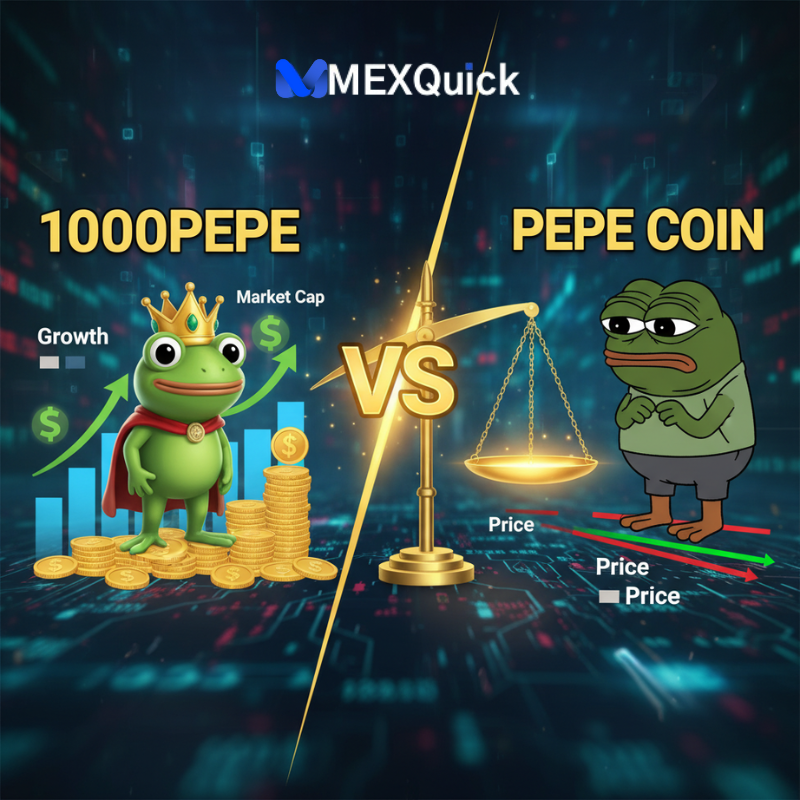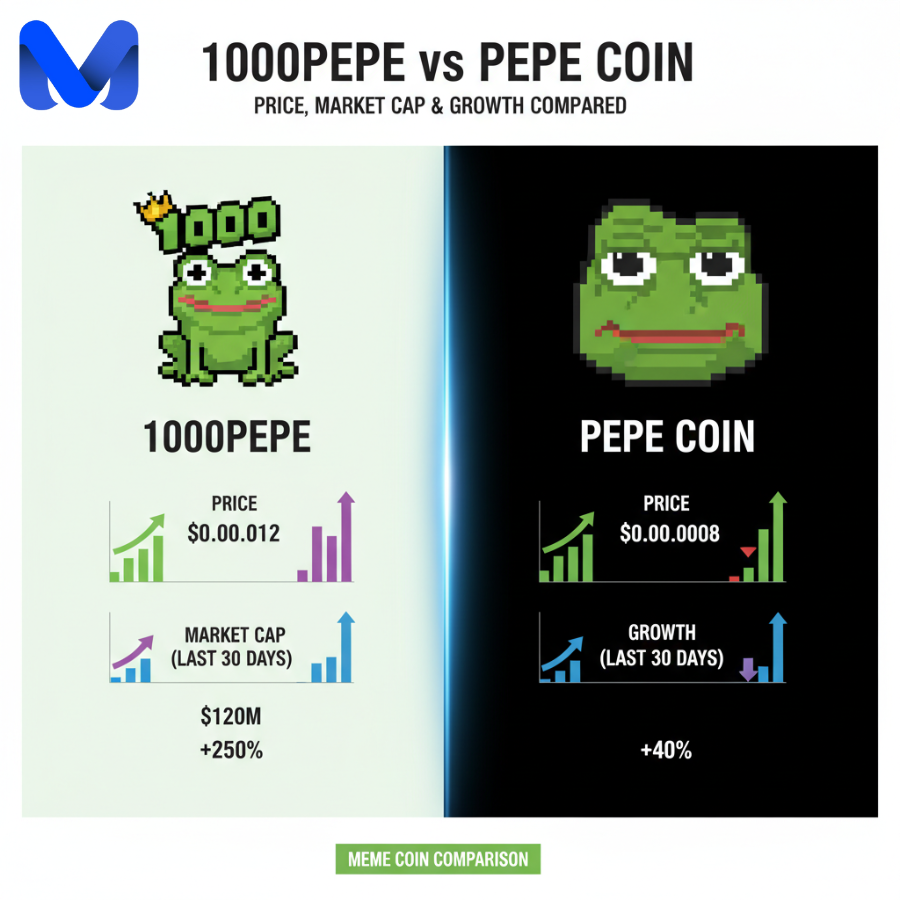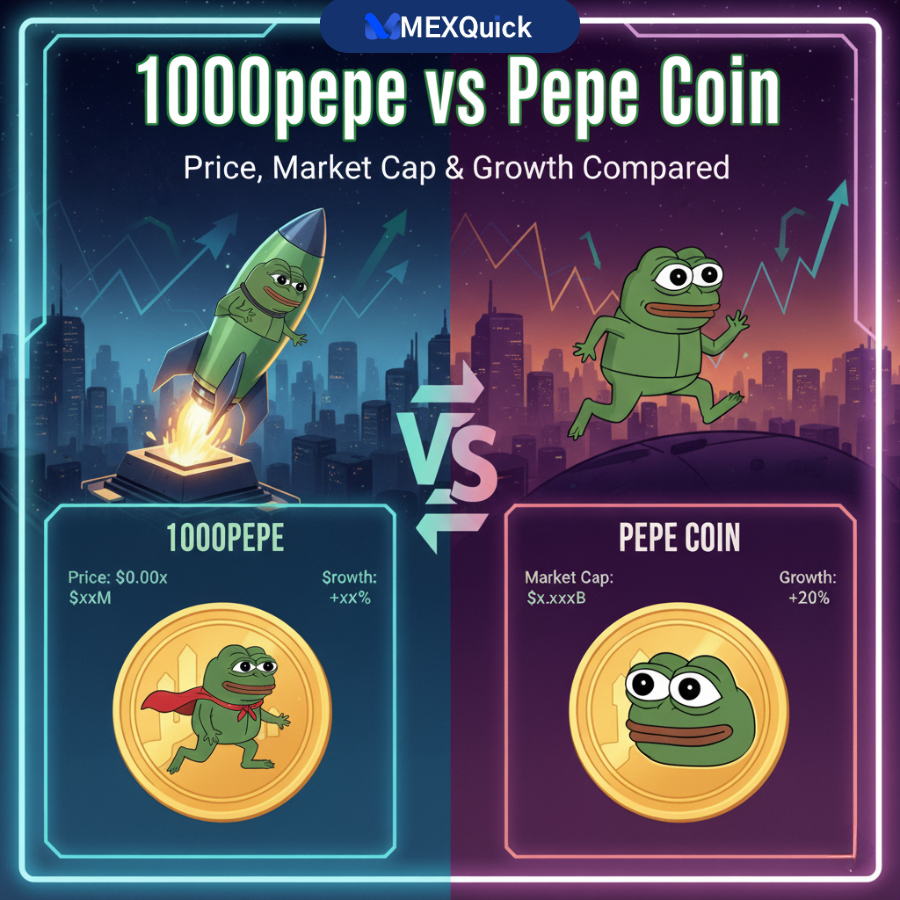Let’s be real. The meme coin space moves at lightning speed. One day you’re scrolling through a crypto feed, and the next, you’re seeing a new frog-themed token with a confusing name. If you’ve landed here, you’re probably trying to untangle the difference between 1000pepe vs Pepe Coin.
It’s not just a spelling game. This distinction could mean the difference between catching a potential opportunity and watching from the sidelines. I’ve spent countless hours analyzing meme coins, and I can tell you that understanding metrics like price, market cap, and tokenomics is what separates hopeful gamblers from strategic investors.
In this no-fluff guide, we’ll break down the 1000pepe vs Pepe coin showdown. I’ll give you a clear, actionable comparison of their price drivers, market cap potential, and underlying technology. My goal is to arm you with the insights you need to make an informed decision, not just hype. Let’s dive in.
Cutting Through the Confusion: What Are 1000pepe and Pepe Coin?

Before we compare prices and charts, we need a solid foundation. What exactly are these two projects? While they both draw inspiration from the iconic Pepe the Frog meme, their core structures and philosophies are fundamentally different.
Pepe Coin (PEPE): The Original Meme Contender
Pepe Coin (PEPE) positions itself as a tribute to the original internet meme. Launched in April 2023, it quickly captured attention by riding the wave of meme coin mania.
-
Objective: To be a purely community-driven meme token with no intrinsic value, banking on virality and cultural relevance.
-
Tokenomics: It operates on the Ethereum blockchain (ERC-20) with a massive total supply, often in the quadrillions. This inherently keeps the per-token price very low.
-
Key Differentiator: PEPE aims to be the “next Dogecoin” or “next Shiba Inu,” focusing entirely on community sentiment and market hype.
1000pepe (1000PEPE): The Scalable, Utility-Focused Cousin

1000pepe (1000PEPE) often enters the scene as a direct response to the limitations of its namesake. The “1000” prefix is a major clue.
-
Objective: To offer a more practical and scalable alternative, sometimes by representing a bundle of 1000 PEPE tokens or by building a separate ecosystem with deflationary mechanics and utility.
-
Tokenomics: A key difference lies in the supply. 1000pepe typically has a much smaller total supply, making each token more scarce. Many projects using the 1000pepe name incorporate features like automatic burning or rewards.
-
Key Differentiator: It attempts to add a layer of technological or economic innovation beyond pure meme power, appealing to investors looking for more than just hype.
Head-to-Head: A Data-Driven Meme Coin Comparison
Now, let’s get to the numbers. This is where the Pepe vs 1000pepe debate gets real. Remember, looking at price alone is the biggest mistake you can make. We need to dig deeper.
Price Per Token: A Misleading Metric
-
Pepe Coin (PEPE): As expected, the price per PEPE token is extremely low (e.g., $0.0000012). This low entry point is psychologically appealing to new investors who dream of buying millions of tokens “for cheap.”
-
1000pepe (1000PEPE): The price will be higher (e.g., $0.0012) if it truly represents 1000 PEPE tokens. However, the relative value is what matters. A higher price doesn’t mean a better project; it reflects the different supplies.
Actionable Insight: Never judge a project by its price tag alone. A token priced at $0.0000001 can be more “expensive” in terms of market cap potential than a token priced at $1.00 if its supply is excessively large.
Market Cap: The True Measure of Value
This is the most critical metric in any meme coin comparison. Market Cap = Price x Circulating Supply. It tells you the total value the market places on a project.
-
The 1000pepe Market Cap Advantage: Let’s say PEPE has a $500 million market cap. If 1000pepe is a separate project with a similar community but a 1000x smaller supply, it might only have a $5 million market cap. For a new investor, the project with the smaller market cap has more potential for exponential growth (10x, 100x) because it requires less new money to drive the price up significantly.
Example: Pumping a project from a $5 million market cap to $50 million is far easier than pushing a $500 million project to $5 billion.
Growth Potential & Community Drivers
Both coins live and die by their communities.
-
Pepe Coin (PEPE): Its growth is tied to major exchange listings, celebrity endorsements, and viral social media trends. Its larger, more established community provides stability but can also mean slower growth percentages.
-
1000pepe (1000PEPE): As a newer or smaller project, its growth can be more explosive. A dedicated, niche community can create rapid price appreciation. However, this comes with higher risk, including lower liquidity and vulnerability to “pump-and-dump” schemes.
How to Evaluate Your Investment: An Actionable Framework
So, which one is right for you? It depends entirely on your risk tolerance and investment goals. Don’t just guess; use this framework.
-
Analyze the Liquidity and Exchange Listings: Is the token listed on major exchanges like Binance or Coinbase (like PEPE might be), or is it only on decentralized exchanges (DEXs)? Major listings mean higher liquidity and easier trading but often come after the biggest growth spurts.
-
Scrutinize the Contract and Team: For newer projects like 1000pepe, always check if the smart contract is audited. Look for renounced ownership (meaning the developers can’t change the rules) to reduce the risk of a rug-pull.
-
Gauge Community Sentiment: Spend time in their Telegram and Discord channels. Is the community engaged and building, or is it just filled with “to the moon” spam? A healthy, active community is a strong positive indicator.
-
Understand the Tokenomics: Beyond supply, look for utility. Does the project offer staking, NFT integration, or any real-world use case? Projects with a plan beyond the meme often have longer lifespans.
Conclusion: Key Takeaways and Your Next Move
The 1000pepe vs Pepe coin battle isn’t about finding one winner. It’s about understanding two different investment profiles within the same meme niche.
-
Pepe Coin (PEPE) is the larger, more established bet. It offers brand recognition and relative stability (by meme coin standards) but requires massive new capital for significant percentage gains.
-
1000pepe (1000PEPE), if it’s a legitimate project with sound tokenomics, represents the higher-risk, higher-reward opportunity. Its lower 1000pepe market cap gives it more room for explosive growth, but you must do intense due diligence to avoid scams.
Your Actionable Advice:
Diversify your research, not just your portfolio. If you’re drawn to the potential of 1000pepe, allocate only a small, speculative portion of your capital to it after verifying the contract and community. For a more measured approach, a established token like PEPE might be a core holding in your meme coin allocation.
I want to hear from you. Which frog has a louder croak in your portfolio? Are you leaning towards the established giant or the agile newcomer? Share your thoughts and questions in the comments below—let’s get a discussion going

